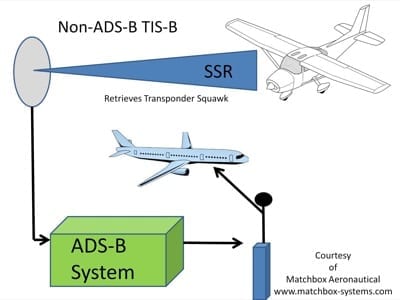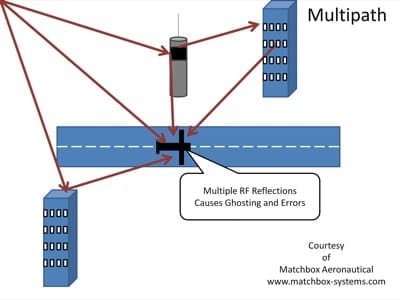By JEFFREY BOCCACCIO.
This is the 13th in a series of articles looking at the impact of the Next Generation Air Transportation System (NextGen) on GA pilots.
In my last post, ADS-B: Twice as nice, I spent a fair amount of time detailing the fact that there are two separate ADS-B systems in the U.S. — one for the big boys at 30,000-plus feet and another for the rest of us at 20,000 feet and lower having all the fun.
However, the FAA knew straight away that there was going to be an issue with GA in implementing ADS-B, due to costs, so agency officials started thinking of ways to bribe us into coming “on board” with ADS-B.
The FAA will offer two services that should be beneficial for all of us. One is TIS-B (Traffic Information Service–Broadcast) and the other is FIS-B (Flight Information Service–Broadcast). I doubt that any GA pilot would refuse either of these services, so it does seem that the FAA came up with a cool little offer to get all of us on board. That being said, there is still a ways to go before everyone out there goes for it, but it is at least a start.
All of the services having to do with ADS-B were split into two separated services or levels. Level one is “Critical” and it has to do with aircraft surveillance and separation, while level two is called “Essential,” which includes TIS-B and FIS-B.
So let’s take a closer look at TIS-B and see just what the FAA has in store for us.
TIS-B allows pilots using ADS-B to visually see any traffic, both in the air and on the ground, including support vehicles at airports. Using this service gives all ADS-B users a much better picture of the traffic in the area where they are flying.
But one very special point you need to know: TIS-B was never intended to be used as a collision avoidance system nor does it relieve pilots from being responsible toward other aircraft and vehicles. Each pilot must still practice the “see and avoid” method for safety. The bottom line here is that you cannot use TIS-B when there is no visual contact with other traffic.
TIS-B operates by way of the ADS-B ground-based communication system. This service is provided by our old standby, SSR (Secondary Surveillance Radar). Data coming from a non-ADS-B aircraft can enter the system by way of SSR, then be routed directly to the ADS-B ground-based data-linked system. From there it is sent out to all ADS-B aircraft and ground vehicles. This is all really cool, but will only work if the non-ADS-B aircraft is within the coverage of any SSR and Ground Base Transmitters (GBT).

In order for this to work, only conventional Mode C and Mode S transponders will respond. As always, barometric altitude is included in the transmitted data providing altitude, speed and heading for Non-ADS-B aircraft. Any aircraft that is still using Mode A or no transponders would be invisible to all ADS-B users.
Another very important point: Coverage for this service is limited to below 18,000 feet. The decision to restrict the altitude to 18,000 feet was primarily to reduce display clutter. Limiting the altitude reduced the amount of players within these Radar and GPT areas.
So this is good, right? Well, kind of since there are still so many GA airplanes out there that do not have any traffic warning systems. The only gotcha here is that we have to stay within the parameters of accuracy that only SSR currently provides. This means that the system refreshes only about every five to 12 seconds. That’s kind of slow compared to twice every second, which is what a full-blown ADS-B TIS (Traffic Information Service) currently provides.
There are still other factors that can cause errors and distort the results. There have been issues with a type of ghosting of aircraft while under this type of traffic avoidance process. In the early days it was found that ground vehicles on the airport surface would get false readings due to a multipath issue. This is caused when radio frequency (RF) signals reflect off buildings and planes and produce multiple RF signals that get received at different time intervals. This is currently under review to rectify this problem, however to make matters a little worse, this type of ghosting can also appear in your plane. Errors can occur when linking ADS-B devices to SSR devices. These problems may be minimized by some filtering techniques either by software, hardware, or both.

Next post we’ll focus on FIS-B, which offers more goodies for GA.
